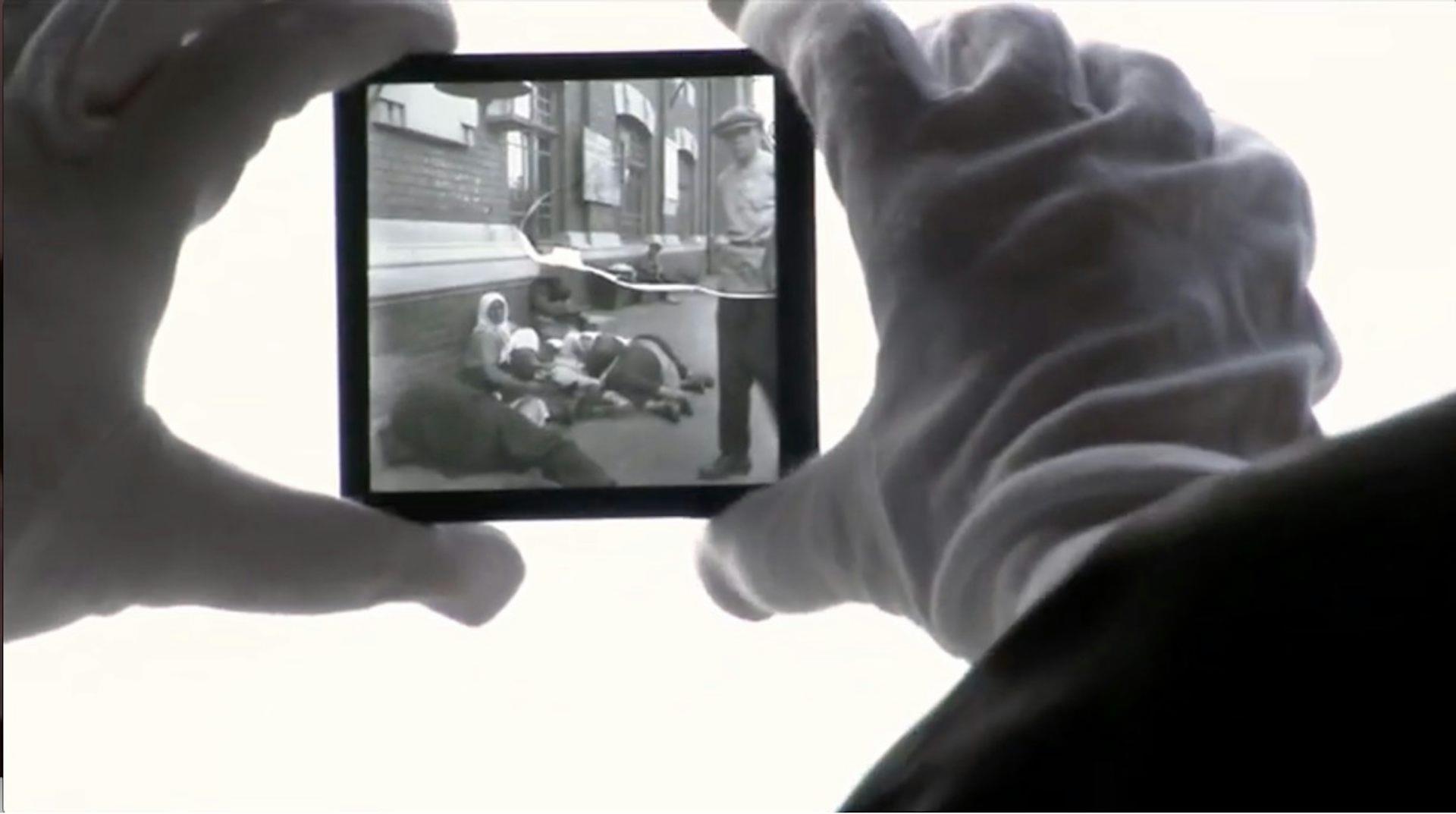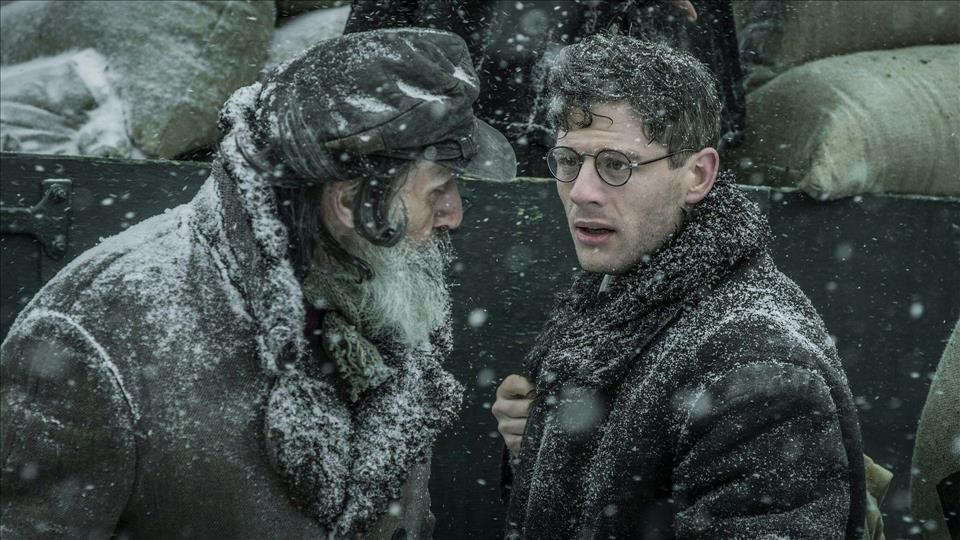
The Holodomor On Screen: How Cinema Shapes Memory Of Ukraine's Famine
Yet it is not universally recognised as a genocide. This lack of consensus stems both from historical debates over whether Ukrainians were deliberately targeted, and from political considerations surrounding the recognition of genocides.
It is nevertheless an important historical event, memory of which serves to unite Ukrainians as a nation. However, one factor preventing wider recognition of the Holodomor as a central moment in 20th century history is the lack of compelling treatment in film.
This is in sharp contrast to the Holocaust, where film was key in cementing its place in both Jewish and wider consciousness.
It is productive to compare depictions of the Holodomor with those of the Holocaust. Like the genocide of Jewish people, the murder by famine of Ukrainians was a crime denied and covered up by its perpetrators, in particular through bans on filming and photography.
When Nazi Germany was defeated in 1945, its foes uncovered and publicised extensive evidence of its crimes. The Soviet Union didn't collapse until 1991, however, over 50 years after the Holodomor, making its documentation harder.
This meant the first films on the subject were made by the Ukrainian diaspora in Canada: The Unknown Holocaust: 10 Million Victims, Ukraine 1933 (1983) and Harvest of Despair (1984). Both included groundbreaking interviews with survivors and eyewitnesses, but also used a number of images depicting Russian victims of the earlier famine of 1921-23. They also quoted widely circulated estimates for the number of victims that have been shown to be inflated.
This left the films open to criticism from deniers who claimed the famine didn't happen, as was the official Soviet line. The shortcomings of the films weakened their case for the Holodomor and restricted their impact.
These films were further limited by being made outside Ukraine, where the subject was still banned. Following the Glasnost (the policy of greater freedom of expression inaugurated by Mikhail Gorbachev in the USSR from 1985) Ukrainians in Ukraine were also able to make films about the subject, even before the collapse of the Soviet system.
Famine 33 was released on the eve of the Ukrainian independence referendum.
Initially they focused on eyewitness testimony with the notable film, 33rd. Witnesses' Testimonies (1989). The film starts by showing images from 1921, saying that that famine was filmed, unlike that of 1933, and then concentrates on interviewing eyewitnesses.
This was swiftly followed by the first acted film depicting these events, Famine 33 (1991). It was released on the eve of the Ukrainian independence referendum and is seen as contributing to the overwhelming endorsement of independence (including by Crimea, Luhansk and Donetsk).
However, despite its political impact, the film is not great. Part of the problem is the difficulty of channelling cinema's spectacular nature and orientation towards entertainment to the task of depicting mass death and suffering. It's the same challenge confronted by films about the Holocaust.
The films that get it rightThe highly influential mini-series Holocaust (1978) was condemned for using actors to portray death by famine, trivialising immense suffering by adapting these historical events to norms of TV entertainment.
Famine 33 and the more recent international production Mr Jones (2019) have not succeeded in producing memorable representations of the terrible events of the Holodomor, but that does not mean the task is impossible.
The trailer for Mr Jones.
The most successful film representation of the Holodomor is the 2008 documentary film The Living, directed by Serhii Bukovs'kyi. Its great merit is that it avoids images of famine victims and any hint of a sensationalist emphasis on cannibalism, a chilling, but repeated feature of famines that is dwelt upon in most other films.
Instead it conveys the events through eyewitness testimony, both in interviews with survivors and accounts produced at the time, contrasted with Soviet propagandist films proclaiming that all was well. The interviews enable us to get to know the elderly Ukrainian peasants before they later recount the awful things that happened to them.
It also avoids the word genocide and the debate on total death figures. The resulting film invites viewers to reflect empathetically, rather than imposing conclusions.
In making this film, Bukovs'kyi built on his previous experience making Spell Your Name (2006). That film was about the Holocaust in Ukraine where more than 1.5 million Jewish people perished. He used the testimonies collected by Steven Spielberg's Shoah Foundation to make the film.
Bukovs'kyi's work explores how memory of these two catastrophes that afflicted Ukraine can be reconciled. Previous films of the Holodomor implicitly competed with memory of the Holocaust.

A still from The Living. Courtesy of Serhiy Bukovsky, Author provided (no reuse)
By contrast, the Russian state is implacably opposed to memory of the Holodomor. It removes monuments to it wherever it can in occupied Ukraine, as expressions of Ukrainian identity and sovereignty separate from Russia. The fourth Sunday in November, Holodomor Remembrance Day, acquires particular significance in this context, not just for Ukrainians.
As well as official ceremonies, commemorative events and lighting a candle, film screenings across media are part of the activities and play a vital role in conveying memory of this tragic history. Engaging with it and watching these films defies Russian attempts to suppress this memory and deny Ukraine's sovereignty.
Looking for something good? Cut through the noise with a carefully curated selection of the latest releases, live events and exhibitions, straight to your inbox every fortnight, on Fridays. Sign up here.

Legal Disclaimer:
MENAFN provides the
information “as is” without warranty of any kind. We do not accept
any responsibility or liability for the accuracy, content, images,
videos, licenses, completeness, legality, or reliability of the information
contained in this article. If you have any complaints or copyright
issues related to this article, kindly contact the provider above.


















Comments
No comment